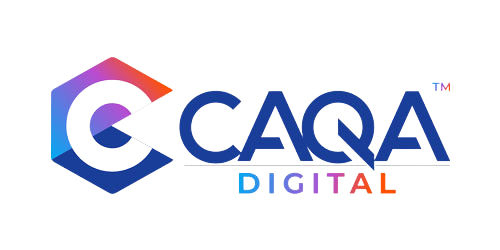Artificial intelligence (AI) has become ubiquitous in various aspects of modern life, including music, media, business, productivity, and even dating. Staying up to date with the latest developments and understanding the key terms and players in this rapidly evolving field can be challenging. This article aims to provide you with everything you need to know about AI, from fundamental concepts to recent advancements, and help you navigate this exciting domain.
What is AI?
AI, also known as machine learning, is a type of software system based on neural networks. While the concept of AI has been around for decades, recent advancements in computing power have propelled its growth. AI enables voice and image recognition, generates synthetic imagery and speech, and has the potential to perform tasks like browsing the web, booking tickets, and optimising recipes.
Dispelling the Myths: Rise of the Machines
Before we dive deeper, let's address a common concern: the fear of a Matrix-style rise of the machines. Rest assured, we will discuss this later in the article to provide a balanced perspective on the topic.
The Guide to AI: A Three-Part Journey
This guide is divided into three main parts, each of which can be read independently and will be regularly updated:
Fundamental Concepts: This section covers the essential concepts in AI, along with recent advancements that have gained significance. It provides the foundational knowledge necessary to understand the field.
Major Players in AI: Here, we present an overview of the key players in the AI landscape and discuss why they matter. Understanding these organizations and their contributions will help you stay informed about the latest developments.
Recent Headlines and Developments: In this curated list, we highlight the most noteworthy headlines and advancements in AI. By keeping up with these updates, you will remain current in this fast-moving field.
By the end of this article, you will have a comprehensive understanding of AI and its recent advancements. We will continue to update and expand this guide as the age of AI progresses. It's important to note that while AI concepts have existed for over 50 years, they have only recently gained widespread recognition. If you feel overwhelmed, rest assured that you are not alone. The field is evolving rapidly, and we're here to guide you.
Clarifying Terminology: Artificial Intelligence vs. Imitation Intelligence
Before we delve further, it's important to note that the term "artificial intelligence" can be misleading. While intelligence is a complex concept without a universally accepted definition, AI systems function more like calculators than human brains. These systems process inputs and generate outputs, but with greater flexibility. Think of AI as artificial coconut—imitation intelligence.
Essential AI Terms
To navigate discussions about AI, familiarise yourself with these fundamental terms:
Neural Network: Our brains consist of interconnected cells called neurons that form complex networks responsible for tasks and information storage. Neural networks in software attempt to recreate this system. They comprise interconnected dots (representing data) and lines (representing statistical relationships) that facilitate input processing and output generation.
Model: A model refers to the collection of code that accepts inputs and produces outputs. It can represent various AI or machine learning constructs, ranging from complete systems like ChatGPT to specific functionalities. Models differ in size and computational requirements, which depend on their training process.
Training: Training an AI model involves exposing its neural networks to a dataset or corpus, enabling the creation of a statistical representation of the data. This process is computationally intensive, taking weeks or months on powerful computers. The resulting model can be smaller and less demanding during actual usage (inference).
Inference: Inference refers to the operational phase of the AI model when it processes inputs and generates outputs. It involves statistically connecting data points to predict or complete patterns. Inference is typically less computationally intensive than training and can be performed on various devices, including smartphones.
Generative AI: Generative AI encompasses models that produce original outputs, such as images or text. While some AI systems summarise, reorganise, or identify, generative AI generates entirely new content. However, it's essential to note that the generated output may not be accurate or reflective of reality. It represents an imitation or creation based on existing patterns.
Current AI Terms: Mid-2023 Update
Beyond the basics, here are the key AI terms that are currently relevant:
Large Language Model (LLM): LLMs are influential and versatile AI models trained on vast amounts of text data from the web and literature. They enable natural language conversations, answering questions, and mimicking different writing styles. However, LLMs are pattern recognition engines, and their responses are attempts to complete identified patterns rather than reflecting objective reality. Careful assessment is necessary.
Foundation Model: Foundation models are large-scale models trained from scratch on massive datasets. Although they require substantial computing resources, they can be downsized by reducing the number of parameters. These models serve as the basis for further customisation and specialisation.
Fine-tuning: Foundation models like GPT-4 are designed to be generalists, but they can be fine-tuned by training them on specialized datasets. Fine-tuning allows models to acquire domain-specific knowledge while retaining their general knowledge from the broader training data.
Reinforcement Learning from Human Feedback (RLHF): RLHF is a type of fine-tuning that improves an AI model's communication skills using data from human interactions. By iteratively incorporating feedback, the model enhances its performance in generating human-like responses.
Diffusion Image Generation: Diffusion is a popular technique used in image generation AI models like Stable Diffusion and Midjourney. These models are trained by gradually degrading images with digital noise and learning to reverse the process, adding detail to pure noise and creating defined images. While newer approaches may emerge, diffusion remains a reliable and well-understood technique for image generation.
Hallucination: Hallucination occurs when an AI model produces output that deviates from reality due to insufficient or conflicting training data. This can be advantageous in creative tasks, such as generating art or mimicking specific styles. However, it becomes problematic when factual accuracy is required, as models may confidently present answers that are partially true and partially hallucinated.
Looking Ahead: Artificial General Intelligence (AGI)
Artificial General Intelligence, or strong AI, refers to an intelligence capable of learning and improving itself similar to human intelligence. The concept remains undefined, but concerns arise regarding its potential for uncontrollable growth. However, it's essential to note that AGI is a distant goal, requiring significant resources and scientific advancements. The portrayal of AGI in movies like "The Matrix" and "Terminator" does not align with its current state and capabilities.
Top Players in AI
To understand the AI landscape, familiarise yourself with these prominent organisations:
OpenAI: OpenAI is a well-known organisation that conducts AI research and offers access to language models like ChatGPT. Initially focused on open research, it has shifted to a more commercial model, providing APIs and applications powered by its advancements. OpenAI's contributions and leadership in large language models make it a key player in the field.
Microsoft: Microsoft has a significant presence in AI research and development. While its own AI products may not have gained the same recognition as others, Microsoft made a strategic investment in OpenAI, forming an exclusive partnership. This collaboration empowers Microsoft's conversational agent, Bing, and strengthens its research endeavors.
3.Google: Although Google missed early opportunities in AI, the company is actively working on developing its own large language models and AI agents. It has redirected its focus towards AI in search and productivity, acknowledging its importance in the future.
Anthropic: Founded by Dario and Daniela Amodei, former members of OpenAI, Anthropic aims to fill the role of an open and ethically considerate AI research organisation. While their models, such as Claude, may not be as widely recognised yet, Anthropic's significant funding positions it as a serious rival to OpenAI.
Stability: Stability represents the open-source school of AI implementation. It adopts a philosophy aligned with the notion of "information wants to be free" and freely shares generative AI models trained on internet data. However, this approach has raised ethical concerns, including the generation of explicit content and unauthorized use of intellectual property.
Elon Musk: Known for his outspoken views on AI, Elon Musk has expressed concerns about its potential risks. Although he is not an AI expert, Musk's influence and initiatives have sparked discussions and responses within the AI community. He aims to establish his own research organisation and contribute to the field.
As the age of AI progresses, the landscape will continue to evolve, and new players and advancements will emerge. It is essential to stay informed and critically evaluate the developments in this dynamic field.
Conclusion
Artificial intelligence has become an integral part of our lives, impacting various industries and sectors. By understanding the fundamental concepts, key terms, and major players in AI, you can navigate this ever-changing landscape with confidence. Remember, AI is an evolving field, and while there are exciting possibilities, it's important to approach it with a critical mindset. Stay curious, keep learning, and embrace the Age of AI


































